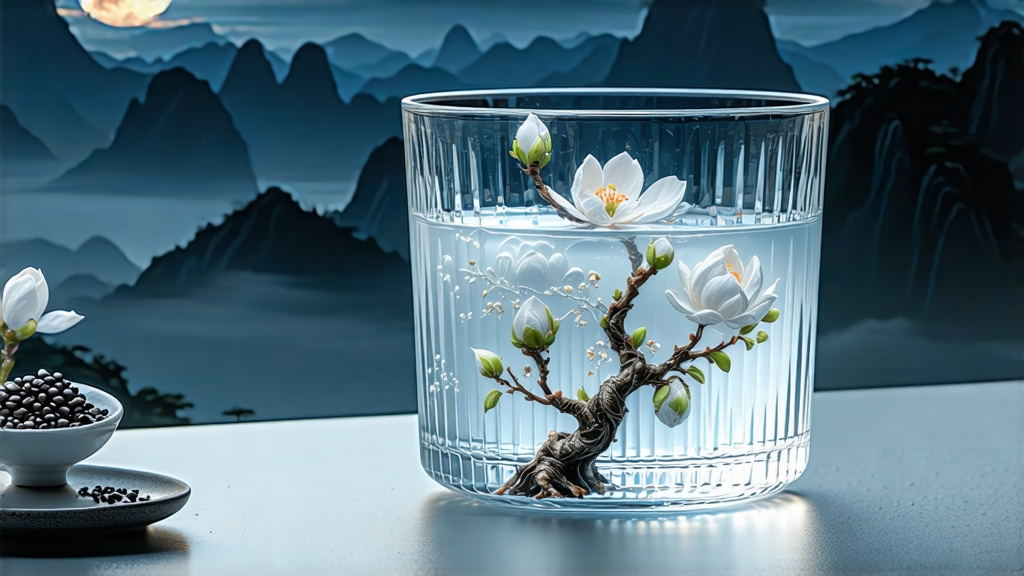
Among the six great families of Chinese tea, white tea is the least theatrical yet the most haunting: it is picked, withered, and dried—nothing more—yet in that transparent simplicity it preserves the very breath of the season in which it was born. Within this minimalist lineage, Bai Hao Yin Zhen—“Silver Needle wrapped in White Down”—reigns as the purest expression of the art. Composed only of unopened leaf buds plucked during the first warm days of early spring, it is the priciest, scarcest, and most subtly eloquent of all white teas. To international drinkers who meet it for the first time, the experience is akin to hearing a single silver bell struck in a mountain temple: the note is soft, but the resonance lingers for hours.
Historical whispers
The written record of “white tea” appears as early as the Song dynasty (960-1279), when the imperial court demanded tribute cakes made from buds whose surfaces had naturally bleached under the weak spring sun. Those cakes, however, were steamed, pressed, and baked—techniques closer to the green-tea protocol of the period. The modern, loose-leaf form of Silver Needle emerged only in the late eighteenth century, when tea makers in Fujian’s coastal counties—Fuding and Zhenghe—began to rely on a newly domesticated cultivar whose buds were unusually fat, downy, and faintly sweet. Because the buds could not withstand the high heat of pan-firing, farmers simply spread them on bamboo trays and allowed the cool mountain wind to finish the work. Thus, by accident of climate and cultivar, the world’s least processed tea was born. By 1891, Silver Needle was already sailing out of the treaty port of Fuzhou, wrapped in lead-lined chests, bound for the glass teapots of Victorian London where it was marketed as “China White Tea—fit for the fairest of ladies.”
Terroir and cultivar
Authentic Bai Hao Yin Zhen comes from only two places: the granite ridges of Fuding in northeast Fujian, and the slightly cooler, red-clay highlands of Zhenghe twenty kilometres inland. In Fuding, the dominant cultivar is Da Bai (Big White), a large-bud variety that accumulates soluble sugars during chilly nights, giving the finished tea a creamy, almost custard-like body. Zhenghe’s smaller-bud Xiao Bai (Small White) yields a lighter, more floral liquor, but lacks the long, satiny finish that connoisseurs prize. Both regions sit just inland from the East China Sea; maritime fog rolls up the river valleys each dawn, bathing the tea gardens in a cool, diffused light that slows oxidation and preserves the buds’ silvery pellicle. The picking window is brutally short: only when the overnight temperature climbs above 8 °C yet stays below 18 °C will the bud reach the desired “one-inch spear” length without unfurling into a leaf. Experienced pickers can harvest barely one kilogram of fresh buds in a full day; five kilograms are needed to yield a single kilogram of finished tea.
Craft: the choreography of wilting
Once picked, the buds are laid upon water-reed screens woven in the village of Guan Yang three centuries ago. For the first six hours they rest in shade, allowing surface moisture to evaporate; this is the “green withering” phase, during which grassy aldehydes drift off and the first hints of dried apricot appear. Next comes the crucial “sun withering”: the trays are carried to a south-facing granite terrace whose temperature has been tempered by the morning fog. Here, the buds are turned every twenty minutes by hand—never by rake—so that each downy tip receives the same angle of ultraviolet light. The goal is not desiccation but a gentle enzymatic nudge: polyphenol oxidase awakens just enough to round the astringency without crossing the line into the brown chemistry of black tea. If the sun grows too fierce, workers erect a cambric canopy; if clouds gather, the buds are carried indoors and fanned by charcoal-warmed air set no hotter than 28 °C. At dusk, when the bud’s moisture has fallen to 20 %, it is stacked three inches deep and left to “rest in